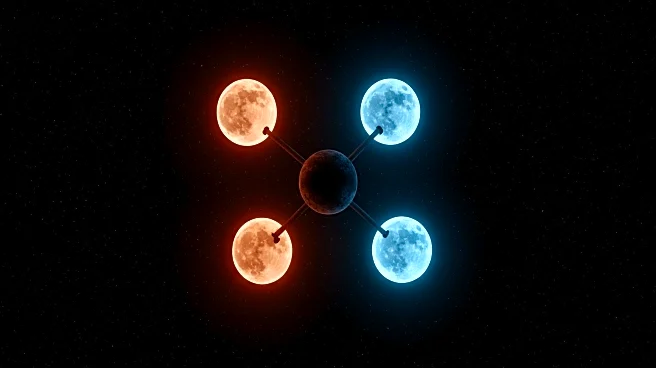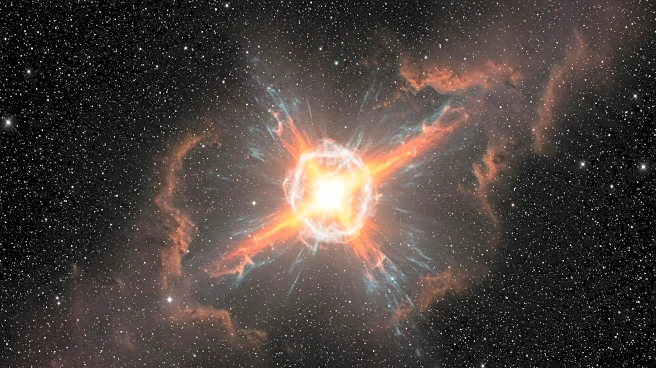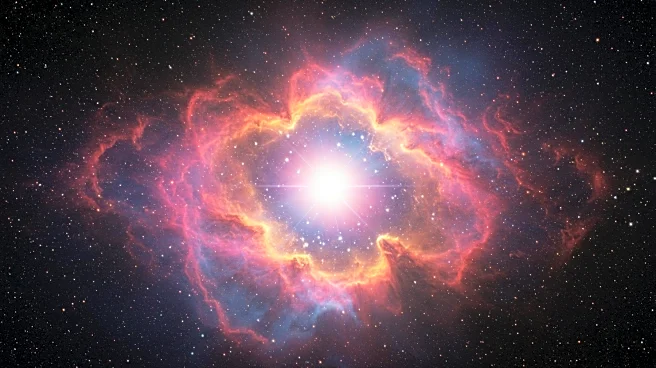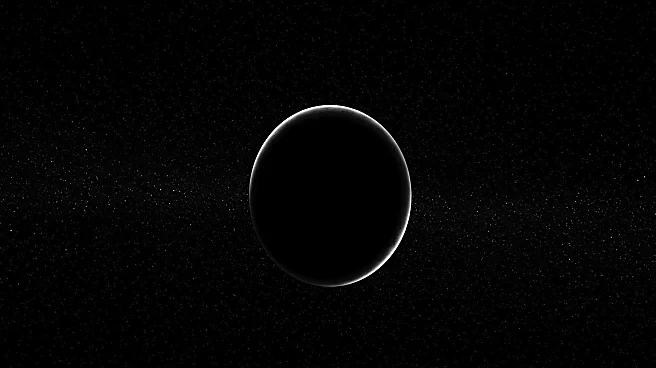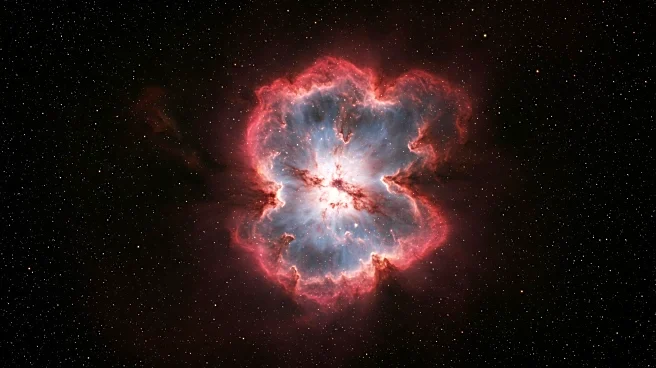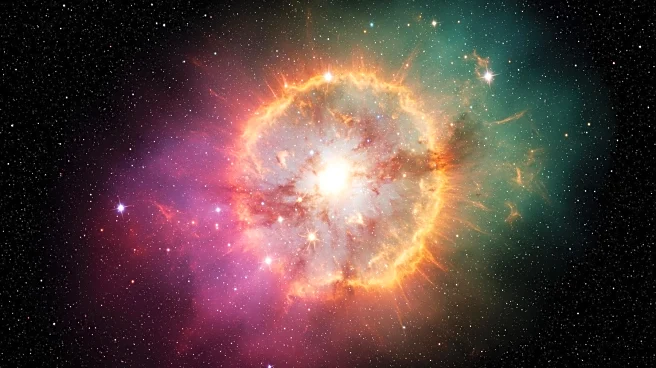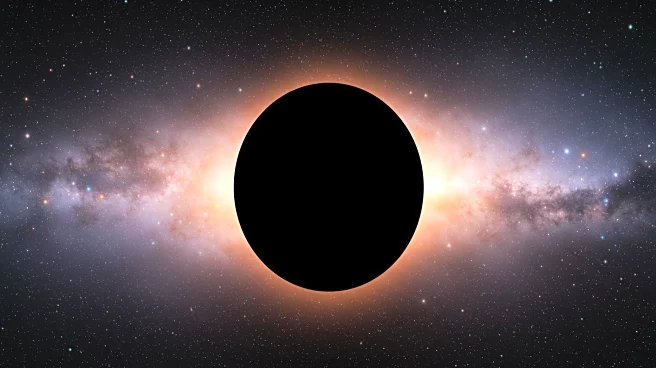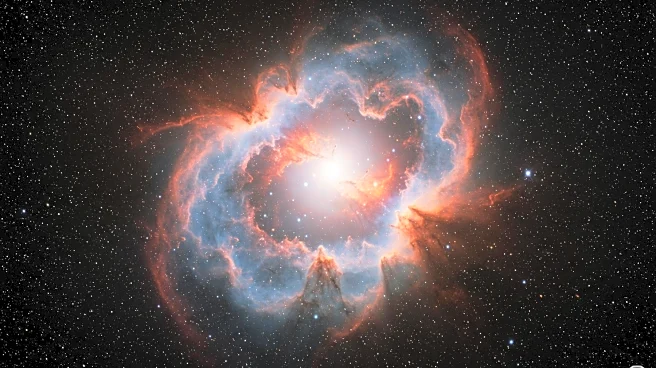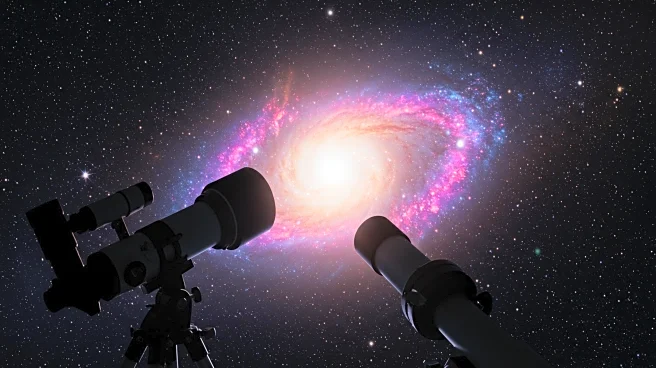What's Happening?
Astronomers have discovered a rare quadruple star system, UPM J1040−3551 AabBab, which includes two 'failed star' brown dwarfs and two red dwarf stars. Located 82 light-years from Earth, this system offers a unique opportunity to study brown dwarfs, which are difficult to understand due to their faintness and the 'age-mass degeneracy problem.' The system's hierarchical nature, with two pairs of binary stars orbiting a common center, provides a stable environment for long-term observation.
Why It's Important?
This discovery is significant for the study of brown dwarfs, as it provides a natural laboratory to explore their properties and evolution. Understanding brown dwarfs is crucial for astrophysics, as they bridge the gap between planets and stars. The system's unique configuration allows for precise measurements that can help resolve the age-mass degeneracy problem, improving models of brown dwarf evolution. This research could lead to advancements in our understanding of stellar formation and the characteristics of celestial bodies.
